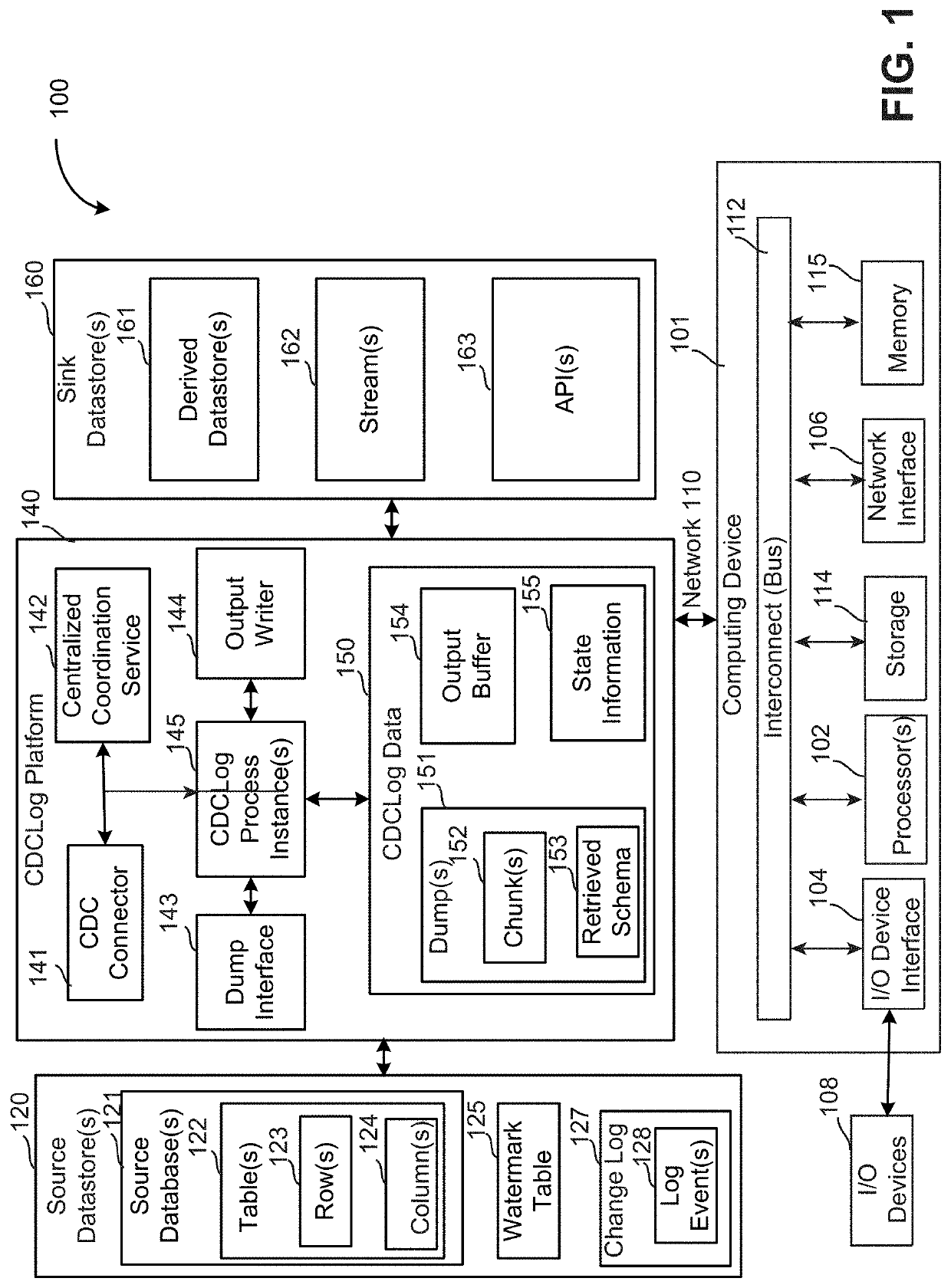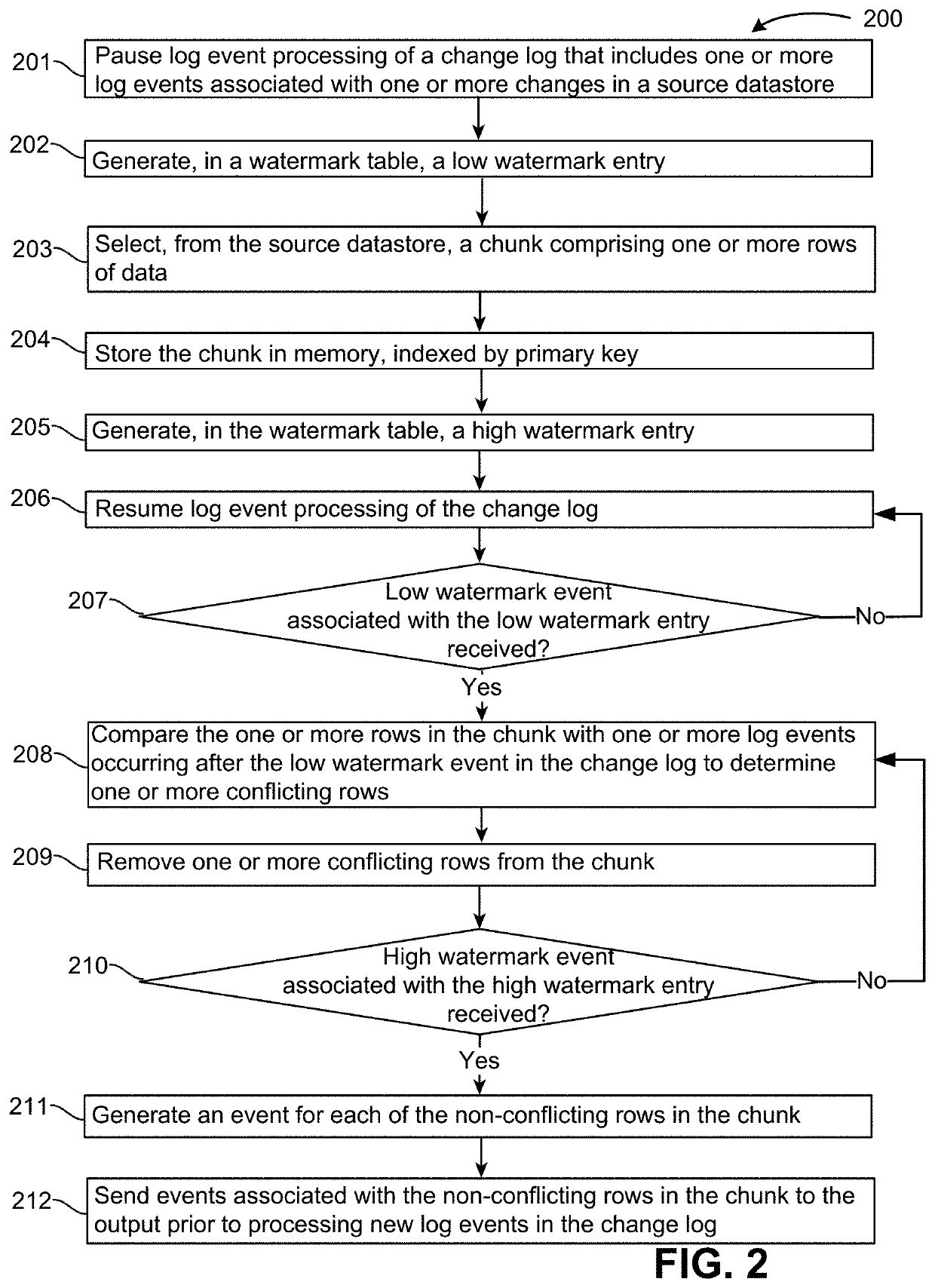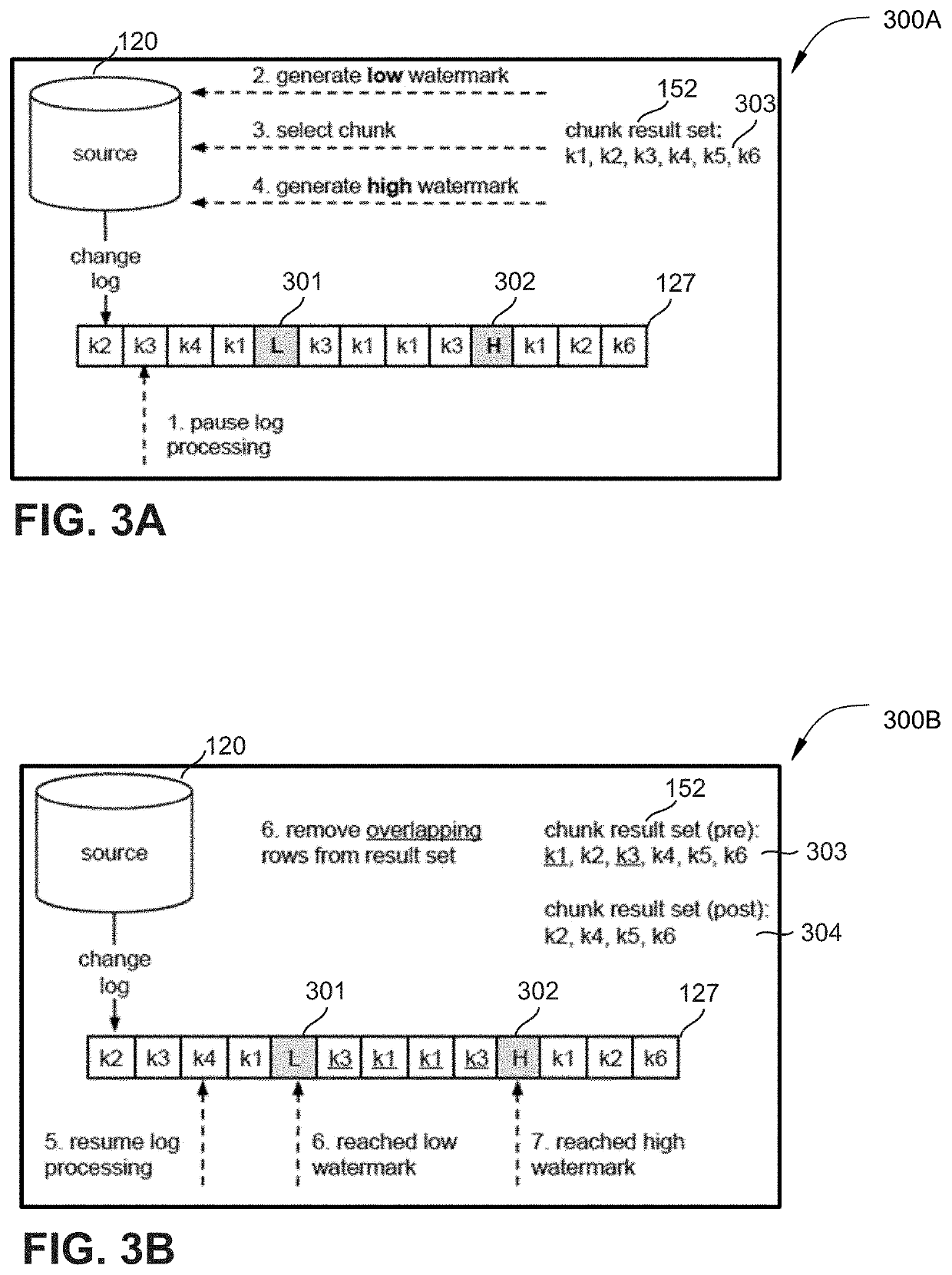Watermark-based techniques for change-data-capture
a data capture and watermark technology, applied in the field of databases, can solve the problems of datastores remaining out of sync, inability to meet data storage requirements, so as to reduce propagation delays, reduce bandwidth and write traffic in databases, and increase the availability of real-time events
- Summary
- Abstract
- Description
- Claims
- Application Information
AI Technical Summary
Benefits of technology
Problems solved by technology
Method used
Image
Examples
Embodiment Construction
[0002]Embodiments of the present disclosure relate generally to databases, and, more specifically, to watermark-based techniques for change-data-capture.
Description of the Related Art
[0003]Many applications utilize multiple heterogeneous datastores, with each datastore serving different needs (e.g., storing the canonical form of data, providing advanced search capabilities, caching). One of these datastores typically serves as the source datastore, while the others are derived datastores. In order to maintain proper functionality, applications that rely on multi-datastore environments typically need to keep these multiple datastores synchronized.
[0004]Some applications rely on traditional multi-datastore synchronization techniques such as dual-writes, distributed transactions, or the like to address data synchronization and event processing. However, these traditional data synchronization techniques have limitations related to feasibility, robustness, maintenance, or the like. Such ...
PUM
 Login to View More
Login to View More Abstract
Description
Claims
Application Information
 Login to View More
Login to View More - R&D
- Intellectual Property
- Life Sciences
- Materials
- Tech Scout
- Unparalleled Data Quality
- Higher Quality Content
- 60% Fewer Hallucinations
Browse by: Latest US Patents, China's latest patents, Technical Efficacy Thesaurus, Application Domain, Technology Topic, Popular Technical Reports.
© 2025 PatSnap. All rights reserved.Legal|Privacy policy|Modern Slavery Act Transparency Statement|Sitemap|About US| Contact US: help@patsnap.com



